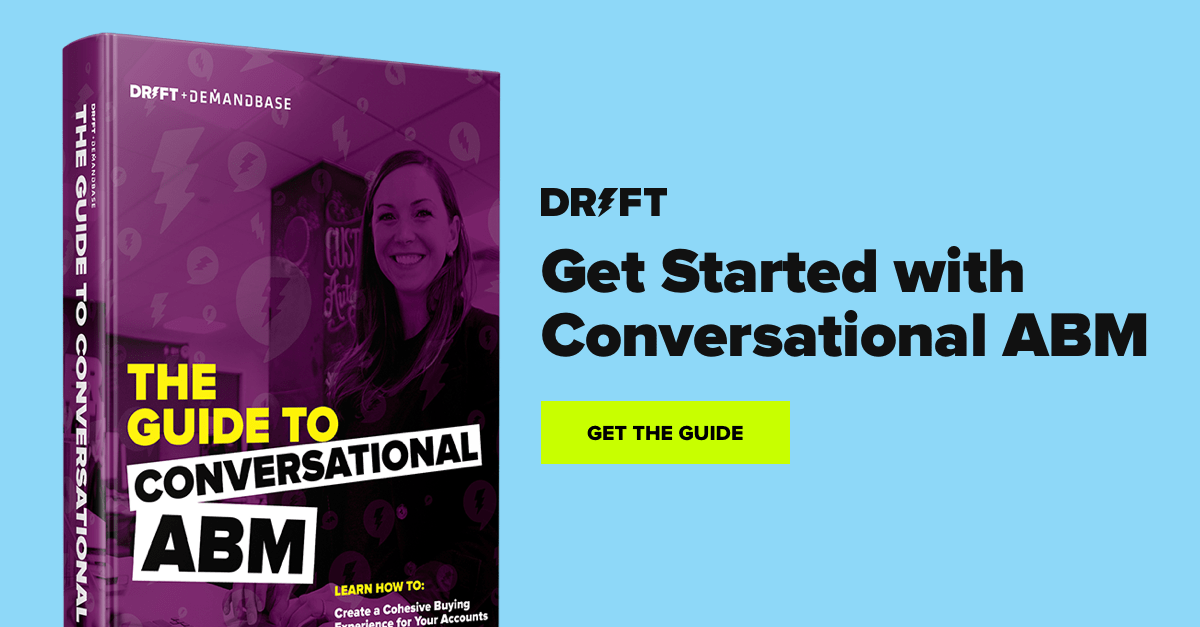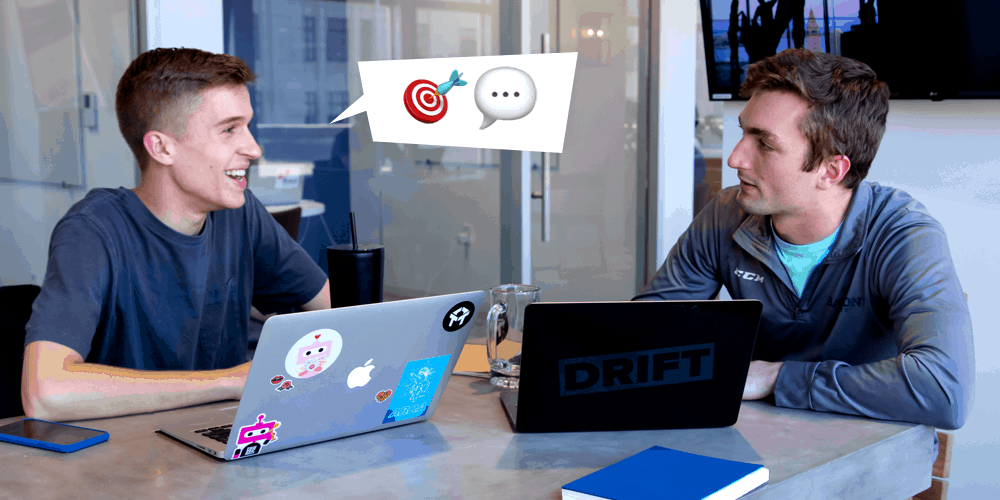
Today’s targeted messages are powered by insights and infrastructure – aimed at connecting with the right person, at the right time, on the right channel – and from there, providing the information needed to move leads closer to closing the deal.
In other words, they’re targeted & relevant (when done right).
Whether you’re targeting by segment or account, your targeted messaging strategy depends on creating a cohesive message for each group across all channels – from emails to chat, PPC to landing pages, social posts to white papers.
What is Targeted Messaging?
Targeted messages convey information with words, as well as other signs, symbols, and contextual clues. Targeted messaging revolves around targeting information and other add-ons – your symbols and emojis, say, based on who you’re talking to, why you’re talking to them – and what it is you want them to do with that information.
Analog examples from Victorian-era love letters to the Birthday card from your Grandma (complete with a hard-to-read cursive script) all employed some level of targeting. See, a secret admirer wouldn’t dream of penning a poetic expression of praise by kicking off the conversation with “Dear Sir/Madam,” nor would a well-meaning grandmother send you a card without a personal message.
We’ve always cared whether people put “thought” into the messages they send us, and that hasn’t changed since we’ve moved into an era of voice search, chatbots, and automation galore.
And while you might argue that personal communications are built for intimate relationships, customers expect a personal connection from the brands they work with – though, yes, that relationship should come with a set of boundaries attached.
Today’s messaging covers everything from nurturing emails to live chat and conversational landing pages. The goal? To nurture leads from lead to customer to advocate through the power of targeting.
Importance of Targeted Messaging
Whatever the message is, be it a tagline, a chatbot greeting, or a piece of an email campaign, a brand’s message always needs to be targeted to the person receiving it. Targeted messaging is how companies make sure they hit the right notes when it comes to customer communications – and perhaps more importantly, make it clear what action you want people to take.
Brands need to uncover information about how customers operate, where they hang out, and what kind of language they use. A quick rundown of some of the targeting tools that brands use to gather audience intel.
- Google’s In-Market Audiences: In-market audiences help advertisers understand which Google Ads offers to drive the most conversions, clicks, and engagements. Though the tool is primarily used to help you set up retargeting campaigns, this information can help you understand what language resonates most with your audience.
- Facebook Insights: Facebook’s Insights are a powerful (and free) tool that all marketers need to use to learn more about their audience – whether they’re setting up a Facebook campaign or looking for ways to level up their targeted messaging approach.HootSuite put together a great guide to Facebook’s audience insights – which looks at all of your filtering options including interests, location, demographics, likes, and more.
- Conversation Logs: Your chatlogs serve as a valuable resource, allowing you not only to pick up where you left off with a customer but also a source of valuable insights. Drift allows you to use chatbots as a replacement for lead generation forms. Chatbots collect the same information as a form, however, they give brands the ability to learn more about the language their audience uses and what kinds of questions they ask. These insights can be turned into marketing campaigns, and help you make improvements to your chat scripts and knowledgebase content to deliver better results.
- Anonymous Website Visitor Intelligence: Drift Intel is our intelligence feature designed to help teams identify opportunities in anonymous traffic and route qualified leads to the right person based on account, region, or company size. Drift Intel collects IP data about your customers and prospects so you can create personalized messaging in real-time while targeting messages to individuals, rather than made-up composite personas. This tool integrates with Salesforce, Marketo, and others – so you’ll get contextual info about your prospects, and from there can receive notifications when a relevant prospect arrives on the scene.
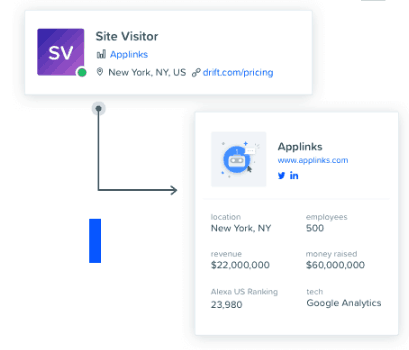
Messaging strategy also depends on integrations – chat should talk to your marketing automation tool, in-app messaging should be synced up to your CRM, and so on. This visibility allows you to create a strategy where you can map out messaging by funnel stage, by the audience, and by behavior.
In-App Messaging
In-app notifications are messages that display when a user is active in an app. Also known as native app content, in-app messages rely on analytics to deliver contextually relevant messages triggered by user interactions.
The purpose of in-app messaging is so that developers can create a richer experience for users – preventing churn or guiding them toward a conversion.
In-app messaging often looks like this example from Waze – those pop-ups you’ll see when you open an app on your phone. Here, they’ve provided a useful tip that their users are likely to appreciate.
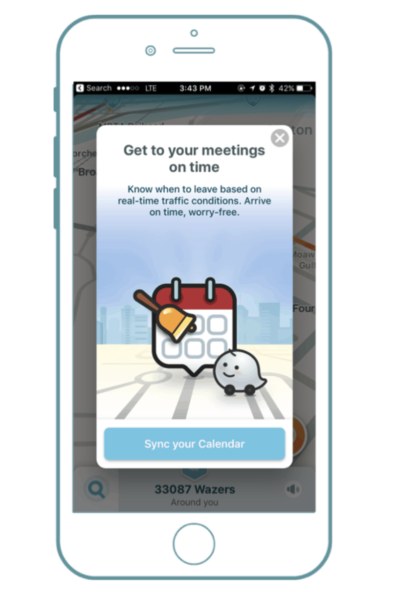
But, there are a few different ways to deploy app-based messages – Basecamp’s example offers users a guided walkthrough. Which, as you can see here, kicks off with a short set of questions:
When to use in-app messaging:
- New user onboarding
- Introduction to new features
- App updates
- Long-term engagement
- Free trial conversions
- Upgrades and promotions
- Tips and tricks
One thing you’ll notice about the examples we just gave is that they all serve a distinct purpose. In-app messaging exists in the service of the user. Meaning, if you’re going to deliver a pop-up, it better be useful.
Account-Based Messaging
If you’re not familiar with account-based marketing (ABM), it’s a way for sales teams to work together to land an organization as a client, versus a single point of contact. We won’t get into the weeds too much here (you’ll get a deeper dive over here if that’s what you’re after).
But, ABM is a focused business strategy where marketing treats every single prospect as if it were its own segment. In other words, we’re talking targeted messaging on steroids.
While there’s a lot more to it than this, here are a few things you should do when putting together your ABM messaging strategy.
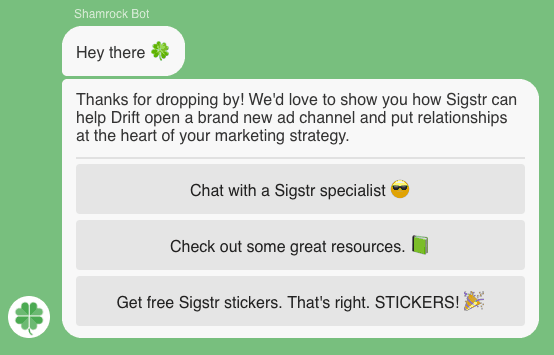
Identify & Act On Your Target Accounts
You’re probably already pretty familiar with defining target personas like Sales Manager Sally or CFO Craig. ABM kicks things up a notch.
What you’ll want to do is combine all of your business intelligence data and identify the customers that currently drive the most recurring revenue to your company. Pay close attention to factors like influence in the market, the likelihood of a repeat purchase, and profit margins – identifying your “best” customers.
From there, identify target accounts with similar profiles to top accounts. Take note of what these customers have in common, how organizations are structured (i.e. who are the decision-makers, influencers).
Another thing to think about is – what opportunities already exist in your web traffic? Drift’s Account Based Marketing Software allows you to collect a full company profile when a qualified lead lands on your site. That information is pulled into your account, where you can review your efforts in progress and further develop your ABM strategy.
Identify the Right Messaging Channels
Communicate with your audience across all channels they might use, including Facebook Messenger, LinkedIn, email, chat, and maybe even direct mail. Obviously, these channels will vary by company and industry, but the key thing to think about is – messages must be tailored to the account and have a consistent tone.
Think about which channel(s) makes the most sense based on the industry, as well as the individuals you’re targeting – for example, you might communicate with an older executive through email and the occasional call, whereas their younger colleagues may prefer live chat.
Create Messaging Content
After identifying goals, target accounts, and the channels best-suited for reaching these big fish accounts, you’ll need to develop content.
ABM can be done on a by industry or by-account basis. Things like email campaigns you might opt for a highly personalized experience, whereas, you might create chat scripts that correspond with an industry landing page.
Think about the challenges that your target accounts face and where your messaging can address pain points across each phase in the journey. Think personalized quotes, special offers or custom landing pages or chatbot scripts.
Targeted Messaging and Chat
Chat can be used at any stage in the sales funnel, but it might be better to think about it this way – breaking your messaging strategy into two parts, off-site chatbots, and native chatbots.
Messenger Bots
You can use Facebook as a support tool, as part of a brand awareness campaign, or a way to re-engage customers who haven’t been to your website in a while.
The goal with Facebook Messenger bots is more about delivering an experience that eventually gets the customer to come back and close a deal, make a purchase, book a demo, etc. You can incorporate Messenger into your Facebook ad campaigns, inviting users to learn more about your company, take advantage of deals, and more.
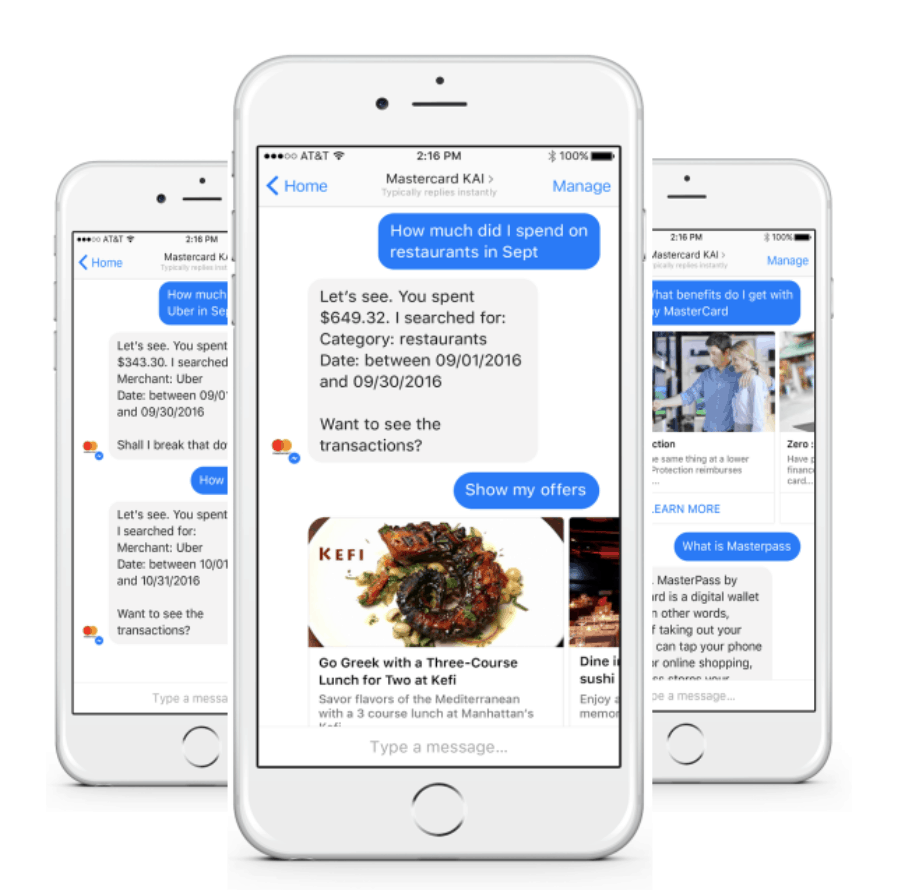
Native Chatbots
Native chatbots, like ours, serve a slightly different purpose than their social media-based counterparts, picking up the conversation after someone arrives on the website. Drift offers a selection of playbooks, or scripts, that allow users to tie lead stages to specific goals and route conversations based on custom rules.
Here, we’ve got one of our Leadbots stationed on a pricing page. In this case, we’d build a conversation that first asks qualifying questions, and based on the answer, we deliver a targeted message–whether that’s answering a question about features or booking a demo.
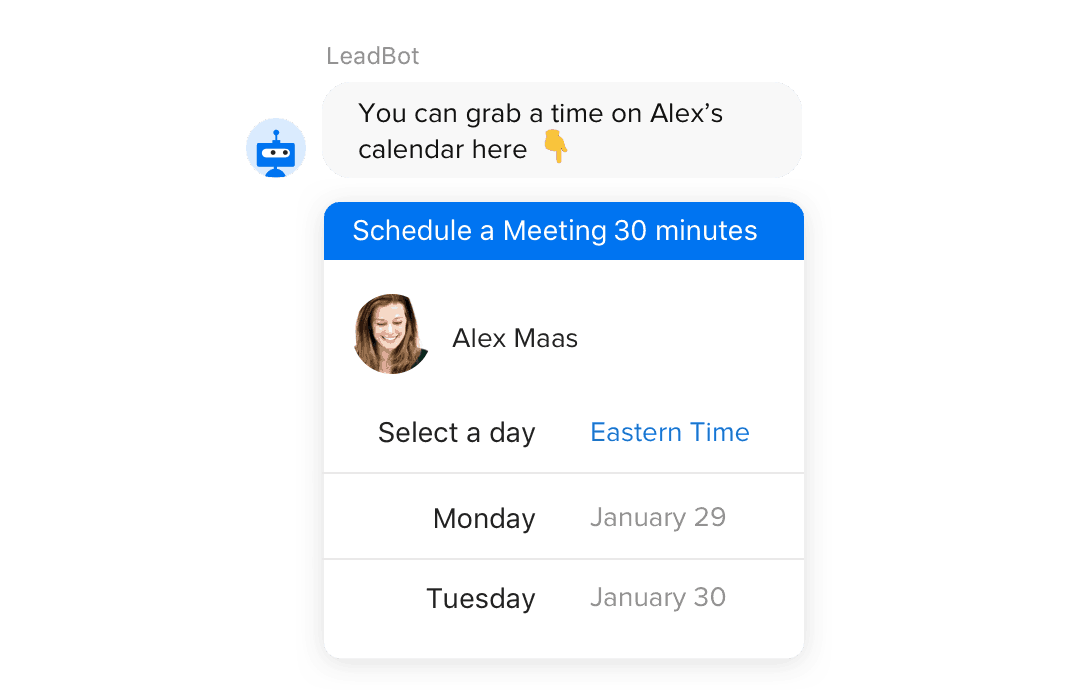
In this example, we have a qualified lead. So, we’ve added a calendar invite action so they can book a meeting with a rep.
Messaging Checklist
The messages you use to talk to your customers and prospects are one of the most essential pieces of your brand. They shape how people think about your products, service, and brand identity.
As you start developing your multi-touch messaging strategy, ask yourself the following questions to make sure that you keep things, well, on message.
Do your messages resonate with your audience(s)?
- Define user goals
- Understand your audience
- Analyze customer support questions
- Review common sales questions
- Is your message showing up at the right location?
Is the message clear and easy to understand?
- Keep messages short and to the point
- Don’t overwhelm your users
- Stick to one goal or CTA per message
- Use buttons
Why do your products and services matter?
- What do you sell?
- >How does your offering help customers do X?
- How will it make them feel?
- What problems can you solve?
What is it that sets you apart from your competitors?
- Different features?
- Better pricing?
- Faster support?
Do messages point to a logical next step?
- Conversation must be mapped carefully
- Include clear CTA to push the conversation forward
- Offer options where appropriate
Are messages tailored to different stages in the sales funnel?
- The tone should match the channel and relationship
- Deliver something useful based on where the user is in the sales cycle
How to Get Started with Targeted Messages
Targeted messaging might seem like a simple concept, but once you get into it, there’s a lot to consider from routing your chatbot to the right place to crafting a multi-touch messaging strategy with a cohesive voice throughout.
The point is, messaging is how we communicate today whether it is via chat, email, messenger, or all of the above. Brands need a strategic approach to targeted messaging requires context and the ability to map out where conversations need to happen and how to say the right thing at the right time.





